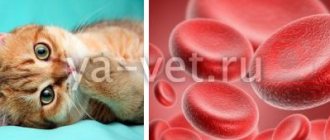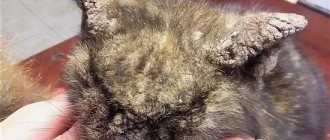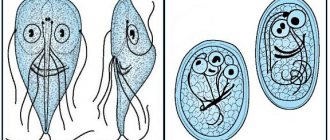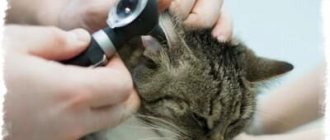- mammary tumors in dogs
Our clinic has accumulated extensive experience in performing unilateral mastectomy in cats.
This operation has become routine for our oncologist surgeons. Considering the large area of excision of tissue affected by the tumor and the age of the patients, most often elderly, our anesthesiologists monitor not only the condition of the animal, but also the level of pain. For adequate pain relief, we recommend that your pet stay in the hospital after surgery for 12 hours to 2 days. The Vetus veterinary clinic offers operations to remove mammary tumors in cats using inhalation anesthesia (gas anesthesia) and rehabilitation in our hospital under round-the-clock supervision by veterinarians.
Attention! To draw up a treatment plan, a consultation with an oncologist is necessary.
Breast neoplasms are the most common tumor. When they appear, they may appear as small lumps in the tissue. As a rule, they are discovered by chance, and over time they begin to increase in size. Nodules in the mammary gland can be single or multiple.
What types of neoplasms are most common?
Unfortunately, the vast majority of mammary tumors in cats are malignant. Therefore, the earlier they are detected and treatment started, the better the prognosis. Once detected, they must be identified (that is, their nature is established) using histological examination (microscopic examination of a tissue sample).
Differences between mastopathy and mastitis
The main difference between mastitis and mastopathy is the nature of the diseases. Mastitis is the inflammatory process of a cat's milk bags due to the proliferation of pathogenic microflora in it. The disease develops due to stagnation of milk in lactating cats, injuries to the skin and nipples from the claws of kittens during feeding, injuries to the chest and abdomen, against the background of false pregnancy and hormonal disorders.
Mastopathy is of a tumor nature; in the mammary glands of a sick animal, modification and growth of atypical tissues occur. Untreated mastitis quite often leads to the development of mastopathy, but most often the cause of the pathology is hormonal changes in various physiological conditions of the animal.
Externally, mastitis in a sick cat is manifested by a visible increase in the affected milk bag with redness of the skin and an increase in local temperature. The initial stage of mastopathy often has similar symptoms. But with mastitis, one of the main symptoms is severe fever, while mastopathy occurs at normal or slightly elevated body temperature of the pet.
Taking a biopsy
The process of taking material is not painful for the animal and looks like an injection with a regular syringe. Tumor cells caught in the needle are sent for examination. Having received the results of the study, we can say whether this neoplasm is benign or malignant, and what type it is.
Taking a biopsy does not affect the growth rate of the tumor in any way. Unfortunately, the most common type of tumor in cats is adenocarcinoma. This malignant tumor is prone to relapse (repeated growth after removal) and metastasis (the appearance of foci of tumor growth in organs and tissues distant from the primary sites of detection).
Surgery to remove the tumor
If the benign nature of the mastopathy is confirmed and the size of the tumor is less than 2 cm, an operation is performed to remove the tumor. If the detected node is larger than 2-3 cm, the prognosis is questionable or unfavorable. Removal of the tumor is carried out after a complete clinical examination of the animal with the study of laboratory blood tests. Contraindications to surgical treatment are the advanced age of the cat, the malignant nature of the mastopathy, pathologies of the heart, kidneys and lungs, and the presence of metastases in the internal organs.
Surgical treatment of the tumor is performed with excision of surrounding healthy tissue. To prevent relapses, it is recommended to remove the ovaries and uterus simultaneously with the tumor. With a favorable prognosis, after excision of the tumor, the animal recovers completely.
How to detect?
Tumors are found as single or multiple lumps of varying sizes. If they occur, they can be easily detected by simply feeling the pet’s abdomen.
Cats normally have four pairs of mammary glands, each with its own nipple, on the right and left sides of the abdominal wall. Most often, neoplasms occur in the 3rd and 4th mammary glands. Often several lesions appear in different pairs at once.
It must be remembered that it is impossible to determine the type of neoplasm based on a simple examination. A biopsy and cytological analysis are needed to determine whether a neoplasm is benign or malignant and to determine the type.
Tamoshkin D.A. — chief physician of the veterinary medicine center Vetus LLC, oncologist surgeon.
| Name | Price |
| Oncologist appointment | 1000 |
| Removal of mammary tumors in a cat | 10,000 (excluding the cost of anesthesia and consumables) |
More detailed information about prices for services can be found in our price list.
Fibroadenomatous mammary hyperplasia in cats
This is what FAM might look like
Approximately up to 80% of milk sac neoplasms found in cats are neoplasias, most of them adenocarcinomas. The remaining 20% are benign formations, mainly fibroadenomatous mammary hyperplasia, or fibroadenomatosis (FAM) for short.
Synonyms: fibroepithelial hyperplasia, mastopathy (popularly).
Most often, this pathology occurs in young cats in heat; it can also occur in pregnant cats, as well as in cats that have been treated with progestins (megestrol acetate, medroxyprogesterone acetate). Most or even all milk cartons are typically affected. Hyperplasia can be so severe that it causes necrosis, ulceration and infection of the tissue.
Age range of the disease: from 6 months to 13 years.
Breed predisposition : not traceable.
Etiology
FAM in a sphinx with damage to the integrity of the skin
Fibroadenomatosis is very often confused with neoplasia of milk bags. Histologically, lesions in FAM appear as benign, non-encapsulated, fibroglandular proliferations. The etiology of FAM involves an excessive response of the body to natural progesterone or synthetic progestins. However, FAM has also been described in spayed cats and neutered cats with no history of progestin use.
Clinical picture:
FAM is characterized by sudden onset. The main clinical sign is a tumor of the breast tissue - the lesion can be bilateral or develop as a single unique lesion. Upon palpation, a loose, dense mass can be easily felt, and the animal does not experience pain. The mammary gland swells over a short period of 2 to 5 weeks; often, with the rapid development of the disease, ulcers and abscesses of the mammary gland can form due to severe enlargement of the gland or trauma. Upon visual examination, the skin covering the diseased mammary glands may be tense and hyperemic. The nipple is sometimes difficult to find due to the size of the gland.
Diagnosis:
FAM in a three-year-old cat
FAM is diagnosed based on clinical signs, patient examination, and medical history. It is advisable to confirm the diagnosis histologically. It should be remembered that histological examination of greatly enlarged and hyperplastic bags is undesirable, as it can cause tissue ruptures and the formation of poorly healing wounds.
Differential diagnosis:
- Breast adenoma
- Breast carcinoma
- Breast sarcoma
Treatment
Treatment depends on the cause of FAM . Contact cats should be operated on, preferably through a lateral approach. If FAM occurs when progestins are used for treatment, treatment should be stopped. The drug of choice for the treatment of FAM is the progesterone receptor blocker aglepristone (Alizin). Remission of clinical signs is observed within 4 weeks of treatment. When infected, fibroadenomatosis should be treated with broad-spectrum antibiotics.
Prognosis: with an uncomplicated course of the disease, the prognosis is favorable.
Mastopathy in sterilized cats: what causes it to develop
Many breeders know that with sterilization, the risk of cancer and mastopathy is significantly reduced. This is indeed true, but only if the operation was performed before the first heat. It makes sense to sterilize a cat for this purpose before the second or third hunt, after which animals are sterilized exclusively for medical reasons. But in these cases, the procedure no longer saves from mastopathy.
In addition, mastopathy in sterilized cats is a consequence of an incorrectly performed procedure, when for some reason the ovaries or the uterus itself were not removed. You can't do that! Complete sterilization always involves the removal of these organs. Otherwise, hormonal imbalances are inevitable.
Forecast
For a good prognosis, adenocarcinoma must be diagnosed in the early stages. If the patient already has metastases, he will live for about 4 months, which will also depend on the location of the tumor.
If the esophagus is affected, then when treated in the first and second stages of the disease, a person lives for five years or more. In the third and fourth degrees - death in 25% of cases.
If the liver is affected, the patient will live no more than three years.
Adencarcinoma is a type of cancer in which you need to immediately consult a specialist and carry out the necessary treatment depending on the type of disease, location and degree of damage to the organ.
What's happened
Adenocarcinoma is a malignant tumor developing from secretory glandular epithelial cells. It is localized on various internal organs, on the internal membranes of hollow organs, as well as human skin.
A distinctive feature of adenocarcinoma is the ability to produce secretions.
Such tumors can have a variety of sizes and shapes, which are directly dependent on the cellular and tissue functions, cellular and tissue structure of the organ that was affected.
Treatment at home
Let us warn you right away: treatment at home is possible only in mild cases of mastopathy, in its diffuse form and in the first stage. If the disease is advanced, or the animal’s condition is of serious concern, you should always seek help from a veterinarian!
Homeopathic remedies
In some cases, homeopathic remedies help:
- Trauma gel for external use. Relieves swelling.
- Phytoelite-Cytostat. A drug specially created to treat and slow the growth of malignant and benign tumors.
- Mastodinon and Masto-Gran . These medications are specifically designed to treat inflammatory pathologies of the mammary gland.
Important! This therapy helps only in the mildest cases.
Basic medications
In clinical settings, the following drugs are used to treat mastopathy:
- Mastomethrin. Used to suppress inflammatory processes, accelerates the regeneration of damaged tissues.
- Duphaston and Utrozhestan. These are purely medical products, but in veterinary medicine (for lack of analogues) they are also actively used. Essentially, it is synthetic progesterone. This hormone suppresses the further growth of a benign tumor and promotes its resorption.
- Anti-inflammatory corticosteroids , but only after oncology has been completely ruled out! These drugs can stimulate the growth of cancerous tumors.
Compresses for mastopathy
On many resources you can find the opinion that compresses can be used for mastopathy. But that's not true. More precisely, not quite like that. Indeed, at the first stage, you can apply cool varieties of them for 20 minutes with a frequency of once every two hours.
But warming poultices and generally applying heat to the affected lobes is strictly prohibited! Such “treatment” only promotes inflammation and can provoke the transformation of mastopathy into a malignant tumor.
Symptoms
At the latent stage of the disease, there are no symptoms.
The first symptoms appear due to tumor growth:
- Pain in the area where the tumor is located;
- Presence of blood clots;
- The appearance of constipation;
- Growth of lymph nodes;
- Weight loss;
- Decreased hemoglobin;
- Fatigue;
- Low ability to work;
- Bad dream.
At the stage of intensive growth of cancer cells and the appearance of metastases, the severity of symptoms increases.
Let's look at the symptoms of the formation of adenocarcinoma in various organs.
Intestines
- Painful stomach;
- Unpleasant sensations after eating;
- Poor intestinal permeability;
- Loose stools alternating with constipation;
- Blood and mucus in the stool.
Esophagus
- Pain when swallowing;
- Dysgaphia;
- Active salivation.
Nasal cavity
- Swelling of the tonsils;
- Persistent inflammation of the tonsils;
- Pain in the larynx, pharynx, nose;
- Unpleasant sensations when swallowing;
- Ear pain;
- Speech impairment;
- Enlarged lymph nodes.
Liver
- Pain in the area of the right rib and hypochondrium;
- The eyes and skin are yellowish.
Causes of adenocarcinoma
- Stagnation, inflammation of secretion in an organ or cavity;
- Poor nutrition;
- Obesity;
- Lack of physical activity;
- Influence of chemicals;
- Heredity;
- Diseases that were previously suffered by a person.
Let's look at the reasons directly related to certain organs that cause adenocarcinoma.
Pancreas
Adenocarcinoma probably forms there due to smoking or pancreatitis.
Osteosarcoma
Stomach
Cancer can occur due to the presence of Helibacter and due to epithelial changes in the mucous membrane of the organ, as well as due to Menetrier's disease (overdevelopment of the gastric mucosa), polyps, and chronic ulcers.
Prostate
The tumor occurs due to heredity, hormonal changes associated with age, the XMRV virus, chronic cadmium intoxication, and nutrient imbalance.
Prevention of mastopathy
The only true and 100% effective prevention of mastopathy is sterilization of the cat before the first sexual estrus. The remaining recommendations allow not only to reduce the risk of the disease, but to detect it in time:
- Take your pet to the veterinarian at least once a quarter. If the cat is Siamese, then you can do this more often.
- You should not often use hormonal drugs to suppress sexual desire. If getting kittens is not planned in principle, it is better to sterilize the cat immediately.
- You need to feed your pet either high-quality “natural” food or “Premium” and “Super-premium” food classes.











